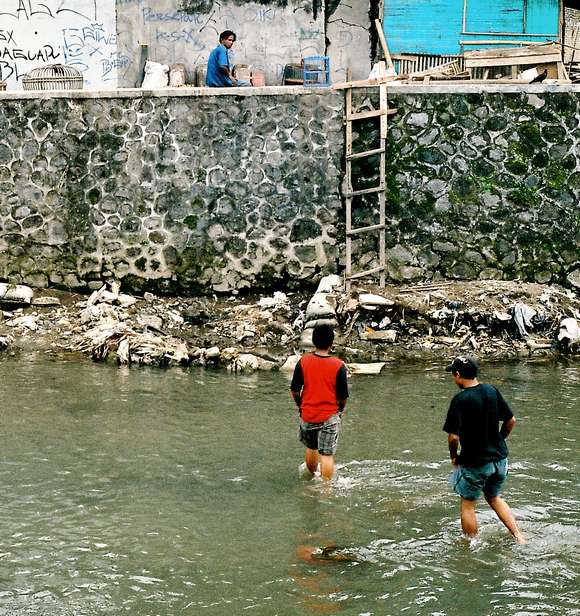Photo-essay: Kali Code is the heart of a diverse and eclectic community
Tessa Toumbourou
Shortcut across Kali Code |
Kali Code rises at the smoking mouth of the Merapi volcano and cuts through the city of Yogyakarta. Alongside the river lives a community of outsiders. I am led by Rita, a Yogya resident who is familiar with this part of town that strangers might otherwise never see. From atop the bridge that connects the north and south of Yogya, it appears as a sprawl of houses roofed with brick slate or rust-eaten corrugated iron, one house tightly squeezed beside the next wherever space is found or forged.
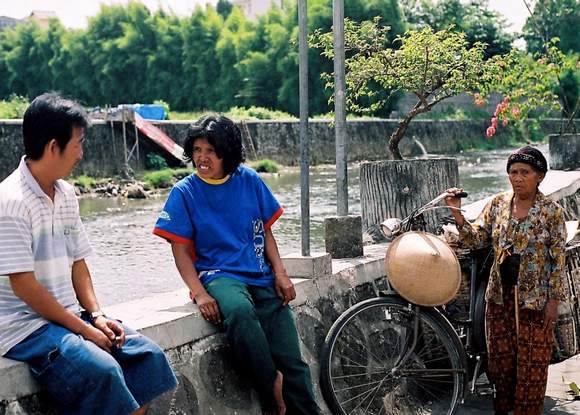 |
A jamu peddler waits patiently as residents chat |
But Kali Code is home to many of the people who help make Yogyakarta tick. The close-knit neighbourhood provides a colourful atmosphere for creative production, where residents work alongside each other at their diverse small-scale industries. In one small section live a family-run tofu factory, jamu (herbal medicine) producers, sandal makers, tailors, becak drivers, and builders who construct and cleaners who maintain the houses of Yogyakarta.
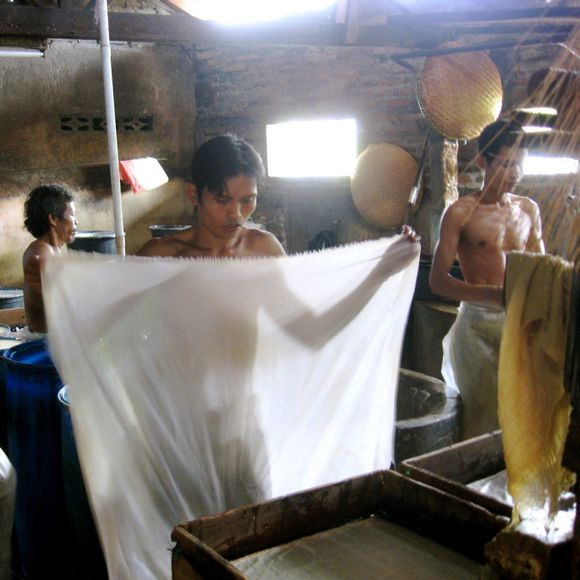 |
Workers in a family-run tofu factory |
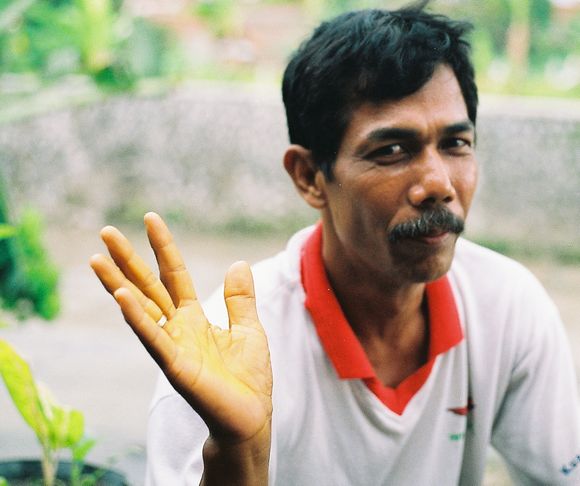 |
The Jamu maker’s hands are stained yellow by herbs |
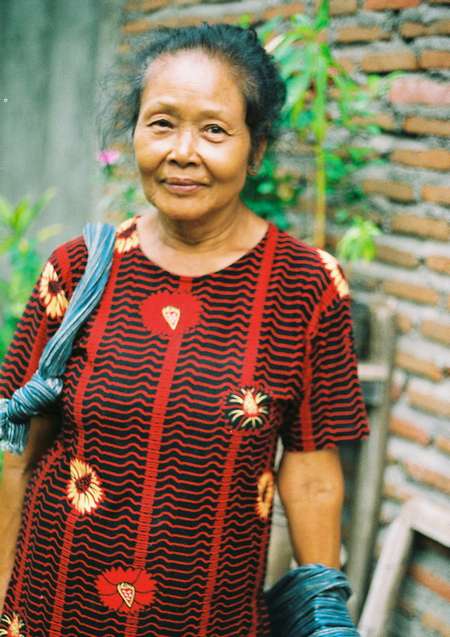 |
A Kali Code woman |
This riverside locale first began as a refuge for the poor, for those who moved from rural areas in the hope of a stable living and for ex-criminals needing a place to begin again. A multitude of other kinds of people now seek sanctuary from the rigid structures of more formal residential spaces. The area is home to those who want to live without being judged for their personal choices, sexuality, marital status or unconventional occupations – a semi-squatter community full of contradictions. Residents here don’t own their land, which belongs to the Sultan, and they end up paying more to their informal sector landlords per square metre than the rich. But, unlike squatter communities of larger cities, they live in relatively well-established homes and seem to exist without the looming threat of eviction.
It is also a place where young people come to hang out. This is never more evident than on a Saturday night, in a popular hangout spot on the Kali Code bridge, where young people come to drink coffee, croon love songs and tell jokes until the early morning. Amongst the crowd are waria boys, male transgender performers who dress in flamboyant coloured clothes and heavy makeup, and wander between stalls shaking their maracas, made of bottles filled with dry rice or bottle tops. They flirt with customers at the stalls, who pay them to leave them alone or to sing them a love song.
As I walk along the riverfront I make way for an elderly man smiling politely, and quietly mumbling to himself as he sweeps away the dust around his house. His neighbours call out to me to not mind him – he lost his memory long ago and has been sweeping the same spot ever since.
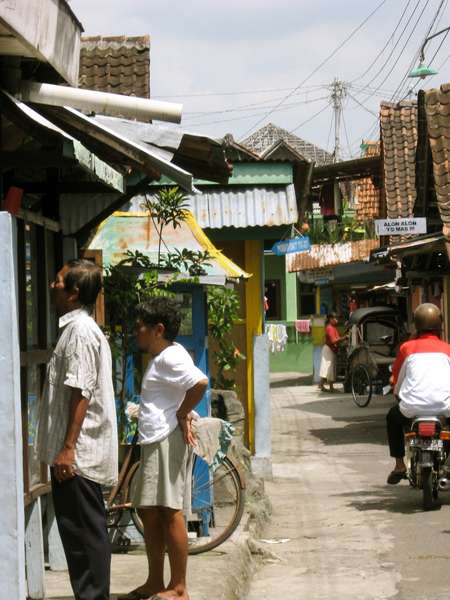 |
A diverse kampung |
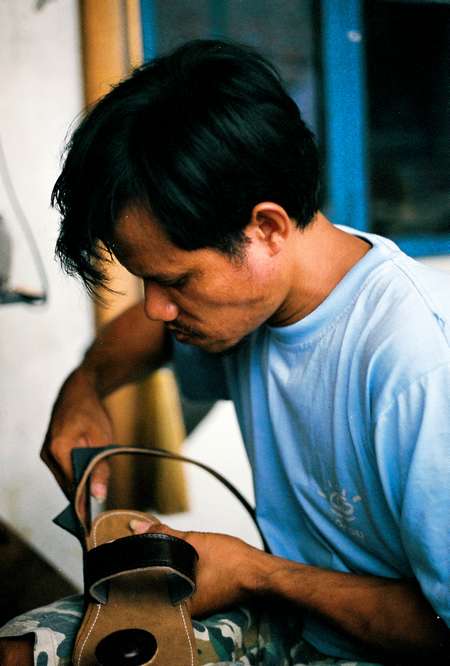 |
Sandal maker |
We pass the homes of sandal makers – in one home batik material is glued onto a piece of square card, the toe-hold attached and leather backing added. Once dry, it is passed to the man next door who expertly slices the cardboard square into a neat shoe shape, making the sandal ready for market in one fluid movement. They work quickly, chatting to their neighbours and to passers by – the woman selling sweet jelly with coconut cream, the man selling hot soup, the newspaper seller, a man with his face painted like a pink cat coming home from a day’s busking. Each individual comes with an interesting story, and each has been drawn to Kali Code for his or her own reasons.
A river brings a community into being
The river itself is the centre of life in the community of Kali Code. Once used for washing and bathing, it is now attractive for its quiet calm, rare considering its vicinity to the bustling centre of Yogya. Fifteen years ago, community bathrooms were built with support from the late Y.B. Mangunwijaya, a Catholic pastor and architect who lived along the river for over six years. The bathrooms are maintained with a small contribution from local residents. The river also irrigates the rice fields wedged between homes in any space where rice will grow.
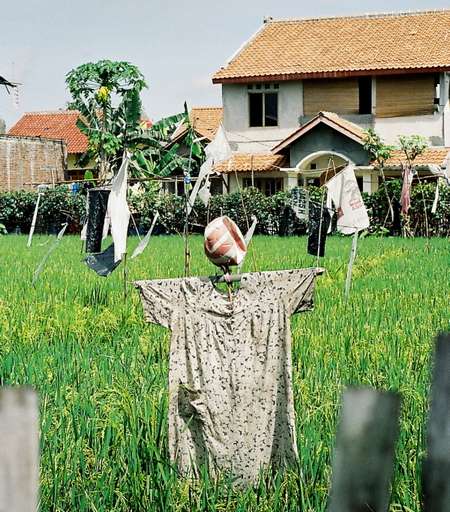 |
Scarecrow |
But the river is also a threat. Rita tells me that the army built concrete barriers along the sides of the river walls to stop the wet season floods spilling over the banks into homes. The barriers are both a curse and a blessing – when they were built, they significantly reduced the width of the river and, as a result, parts of Yogya still flood.
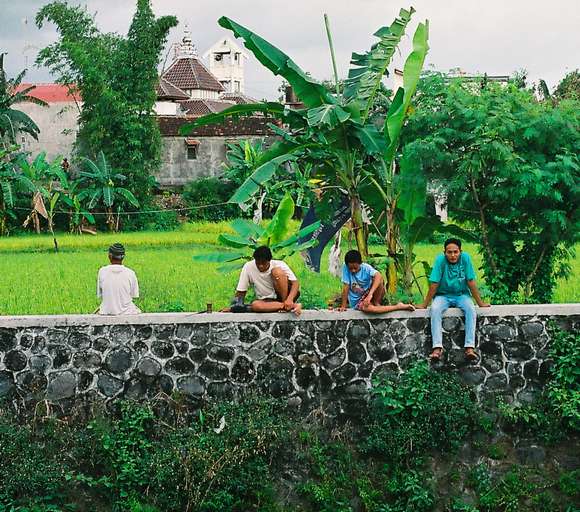 |
Resting on the river-bank |
A resident listening closely adds that years ago this river was a dumpsite for butchered animal off-cuts and leather scraps, along with the rest of the city’s waste. Working with residents, a community-based program, the Kali Code Care Program, has helped to ensure that this kind of waste no longer ends up in the river. According to researchers at the Gadjah Mada University, a serious change of attitude needs to take place in order for the river to be no longer seen as a rubbish dump. Months ago an excavator dug out the sediment that was clogging the river, to ensure smooth flows during the wet season. But this also wiped out vegetable crops planted by some enterprising locals in the soil that had begun to emerge on the river’s surface. And despite the work that has gone into cleaning up the river, it remains a familiar murky grey-brown, choked with rubbish.
Even despite the water’s unappealing tinge, several men squat over its banks, fishing rods in hand, waiting for a bite. I ask a fisherman if he’s ever caught anything. ‘Once’, he tells me light-heartedly. ‘There they are.’ He indicates the flashes of silver under the water’s surface, a school of fish swimming in the nearby eddies.
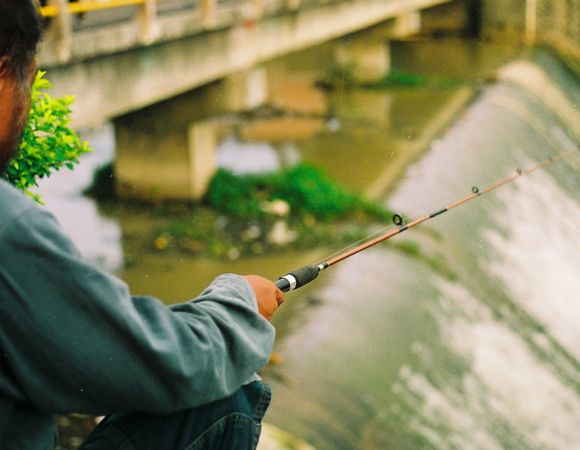 |
An optimistic fisherman |
Kali Code constantly surprises with the life it contains – despite the odds – lingering just beneath the surface. It is these unusual and unexpected contradictions that make Kali Code such an interesting place, a community that resulted from, and endures because of, its diversity. ii
Tessa Toumbourou (tessatoumbourou@hotmail.com) is an Indonesian language and politics graduate, currently in Indonesia on a Darmasiswa scholarship.
All photo's in this photo-essay are by Tessa Toumbourou
